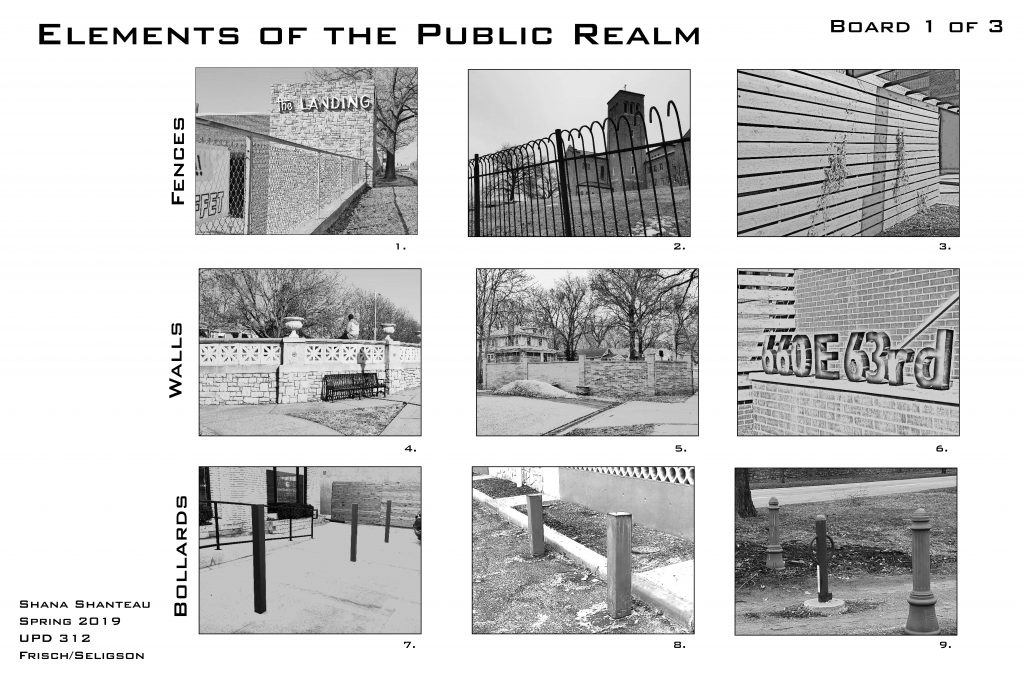

Walls, fences, and bollards are a few fixtures that add to one’s overall experience in any public realm. Through analysis of these elements, I was able to observe that among these three, there were varying styles and sizes. I also observed that all three of these elements serve a function of safety and boundary. A wall, fence, or bollard creates a line between that which is perceived to be safe and that which is perceived to be unsafe. Fences can create a buffer of safety between drastic differences in topography, as in picture 1, or differentiate between public and private spaces, such as in pictures 2 and 3.
The Brooklyn Ave. wall, shown in picture 5, is a brick wall that was built through the middle of the street. If this did not exist, it would connect the Citadel and the Blue Hills Neighborhoods. This gives the impression of stark division between these two neighborhoods.
Bollards are another feature that create a barrier or a buffer. They designate the difference between the spaces that cars are allowed and are not allowed.

The intent of the diagrams above is to show how bollards, walls, and fences guide and disrupt movement. Bollards in front of a box store prevent cars from going into the building. Walls through the middle of the street disrupt cars from being able to pass through and prevent neighborhoods from being connected. Fences around a school yard protect the children from traffic and intruders.
All three of these elements contribute in guiding the pedestrian and motorist experience as they move through the public realm.